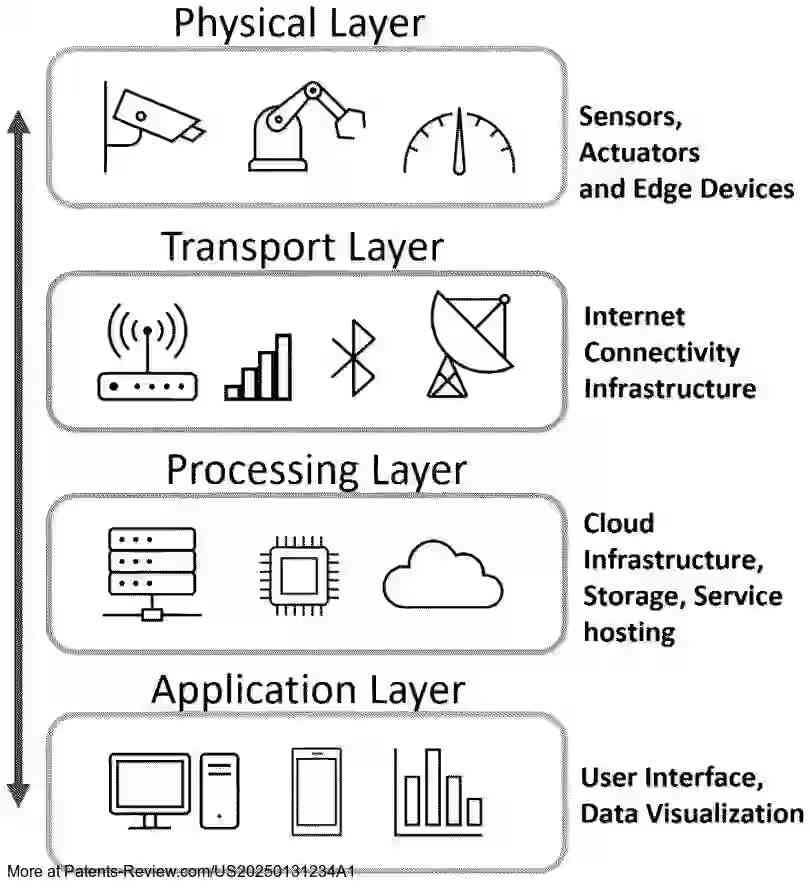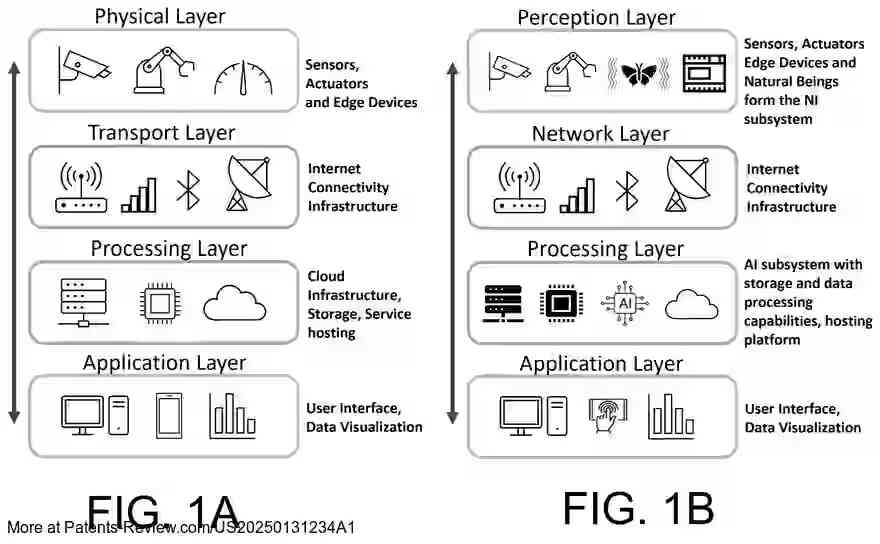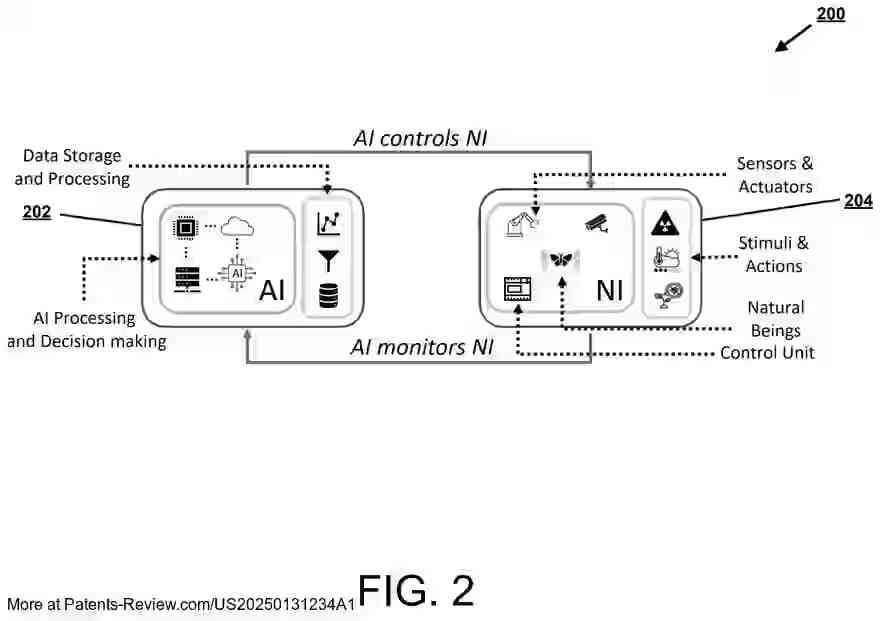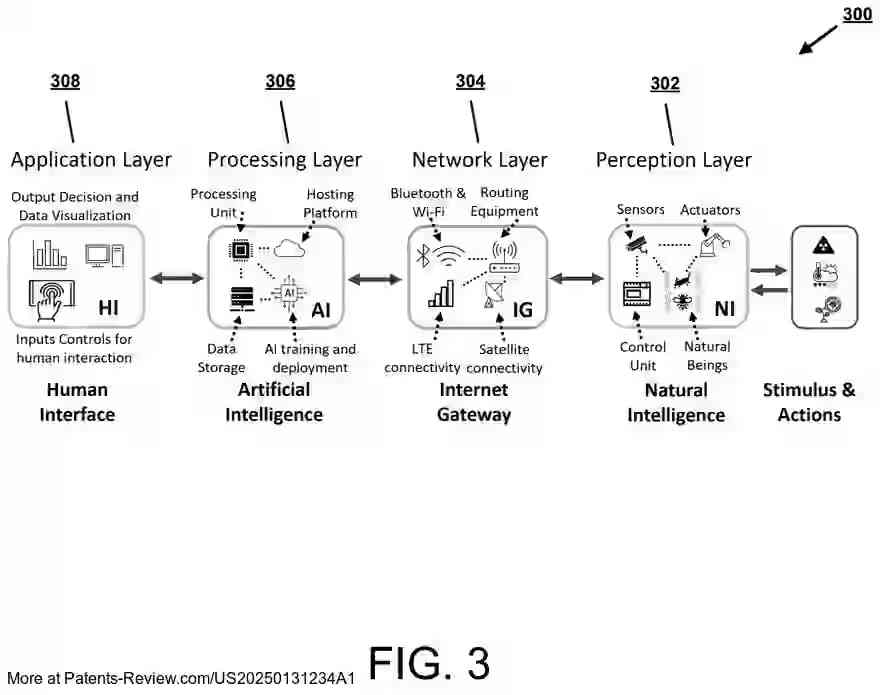SYSTEMS AND METHODS FOR INTERFACING NATURAL INTELLIGENCE WITH ARTIFICIAL INTELLIGENCE
US20250131234
2025-04-24
Physics
G06N3/006
Inventors:
Applicant:
Drawings (4 of 37)




Smart overview of the Invention
The patent application discusses a fusion intelligence system that integrates natural intelligence (NI) with artificial intelligence (AI) to enhance decision-making in Internet of Things (IoT) environments. The NI subsystem includes sensors and actuators that interface with natural beings, collecting data from the environment and transmitting it to the AI subsystem. The AI subsystem utilizes this data to train models that monitor and control the NI subsystem, aiming to improve real-time interactions with the physical world.
Technical Background
The current IoT systems rely heavily on sensors and actuators to convert physical stimuli into digital data, allowing AI systems to automate responses. However, AI systems face challenges in understanding context and making rational decisions due to their black-box nature. Additionally, sensory technologies have limitations in range, accuracy, and energy efficiency, which hinder the deployment of complex systems at the edge. This patent addresses these limitations by proposing a system that combines NI and AI for more effective real-time decision-making.
System Configuration
The proposed system consists of several layers: a perception layer with NI subsystems interfacing with natural beings through sensors and actuators; a processing layer with AI subsystems that receive data from NI subsystems and train AI models; a network layer facilitating data transmission; and an application layer providing user interaction. The NI subsystem digitizes actions and responses, while the AI subsystem interprets this data to generate instructions for controlling natural beings.
Operational Embodiments
The system can be configured in various ways, such as one-to-one or many-to-one relationships between NI and AI subsystems. It can also include monitoring and controlling models within the AI subsystem. Monitoring models are trained to observe activities based on sensor data, whereas controlling models generate instructions for actuators. This setup allows for dynamic adaptation to changes in the environment and enhances the system's ability to predict behavior.
Technical Improvements
The fusion intelligence system offers improvements over existing IoT-edge solutions by reducing reliance on cloud processing and enabling more immediate responses through edge computing. By integrating NI with AI, the system can better handle unforeseen scenarios and optimize decision-making processes. This approach not only enhances efficiency but also addresses energy consumption and memory requirements, making it feasible for deployment at the edge of IoT networks.